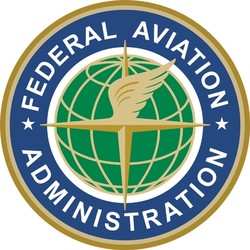Wed, Jul 20, 2016
New TALPA Standards To Be In Place By October 1, 2016
The FAA and other members of the aviation community have developed new standards to improve safety at U.S. airports during inclement weather. On October 1, 2016, U.S. airports, airline flight crews, dispatchers, general aviation pilots, and air traffic controllers will begin using new Takeoff and Landing Performance Assessment (TALPA) standards to reduce the risk of runway overrun accidents and incidents due to runway contamination caused by weather and other factors.

The FAA developed the standards based on the work of the Takeoff and Landing Performance Assessment (TALPA) Aviation Rulemaking Committee (ARC), which was formed after the December 2005 overrun accident at Chicago Midway Airport. In that accident, Southwest Flight 1248 ran off the end of the runway and into a city street after landing during a snowstorm.
As a result of the committee’s work, the FAA has developed a new method for airports and air traffic controllers to communicate actual runway conditions to the pilots in terms that directly relate to the way a particular aircraft is expected to perform. TALPA improves the way the aviation community assesses runway conditions, based on contaminant type and depth, which provides an aircraft operator with the effective information to anticipate airplane braking performance.
Airport operators will use the Runway Condition Assessment Matrix (RCAM) to categorize runway conditions and pilots will use it to interpret reported runway conditions. The RCAM is presented in a standardized format, based on airplane performance data supplied by airplane manufacturers, for each of the stated contaminant types and depths. The RCAM replaces subjective judgments of runway conditions with objective assessments tied directly to contaminant type and depth categories.
For example, using today’s assessment process, a runway that is covered with two inches of dry snow would be reported as “FICON 2IN DRY SN OBSERVED AT 1601010139. 1601010151-1601020145” along with Mu values as “TAP MU 29/27/29 OBSERVED AT 1601010139. 1601010151-1601020145.
A Mu number describes a braking co-efficient of friction.
Starting October 1, 2016, the same NOTAM with contaminants would be reported using Runway Conditions Codes as follows:
DEN RWY 17R FICON (5/5/3) 25 PRCT 1/8 IN DRY SN, 25 PRCT 1/8 IN DRY SN, 50 PRCT 2 IN DRY SN OBSERVED AT 1601010139. 1601010151-1601020145

The pilot or dispatcher would then consult the aircraft manufacturer data to determine what kind of stopping performance to expect from the specific airplane they are operating.
The airport operator will assess surfaces, report contaminants present, and determine the numerical Runway Condition Codes (RwyCC) based on the RCAM. The RwyCCs may vary for each third of the runway if different contaminants are present. However, the same RwyCC may be applied when a uniform coverage of contaminants exists. RwyCCs will replace Mu numbers, which will no longer be published in the FAA’s Notice to Airman (NOTAM) system.
Pilot braking action reports will continue to be used to assess braking performance. Beginning October 1, the terminology “Fair” will be replaced by “Medium.” It will no longer be acceptable for an airport to report a NIL braking action condition. NIL conditions on any surface require the closure of that surface. These surfaces will not be opened until the airport operator is satisfied that the NIL braking condition no longer exists.
Airports will start reporting runway conditions using the RCAM on October 1. The FAA is advising operators to develop procedures for pilots and dispatchers that address the changes to runway condition reporting procedures.
(Source: FAA news release. Image from file)
More News
No Gyro Approach A radar approach/vector provided in case of a malfunctioning gyro-compass or directional gyro. Instead of providing the pilot with headings to be flown, the contro>[...]
Aero Linx: European Hang Gliding and Paragliding Union (EHPU) The general aim of the EHPU is to promote and protect hang gliding and paragliding in Europe. In order to achieve this>[...]
Make Sure You NEVER Miss A New Story From Aero-News Network Do you ever feel like you never see posts from a certain person or page on Facebook or Instagram? Here’s how you c>[...]
Also: Duffy Wants $$$, KS Airports, Morningside U’s Aviation School, New Airstrip In ID After 6 were killed in a helicopter crash over the Hudson River, several US Representa>[...]
Also: Hermeus Quarterhorse MK1, Seaplane Rating Guide, Vietjet A330neos, SFO Wacky Weed Bust As the air traffic controller shortage trudges on, the US Department of Transportation >[...]
 ANN's Daily Aero-Term (06.03.25): No Gyro Approach
ANN's Daily Aero-Term (06.03.25): No Gyro Approach ANN's Daily Aero-Linx (06.03.25)
ANN's Daily Aero-Linx (06.03.25) ANN FAQ: Turn On Post Notifications
ANN FAQ: Turn On Post Notifications Airborne 05.30.25: Anti-Helicopter Bill, PW Strike Done, All-Electric Bristell
Airborne 05.30.25: Anti-Helicopter Bill, PW Strike Done, All-Electric Bristell Airborne 05.29.25: ATC Bonu$, VX4 eVTOL Flies, Starship 9 Test
Airborne 05.29.25: ATC Bonu$, VX4 eVTOL Flies, Starship 9 Test




